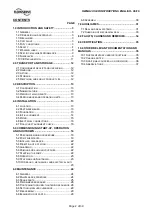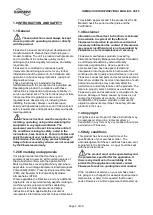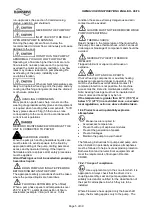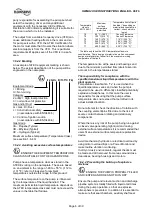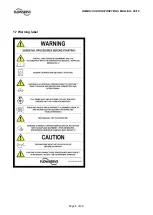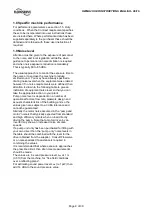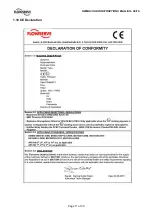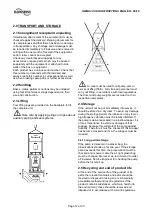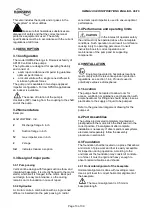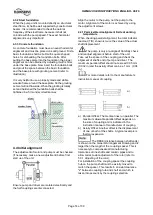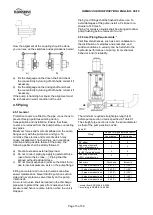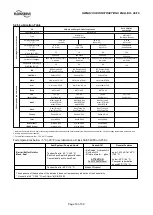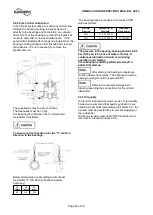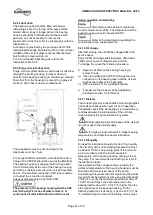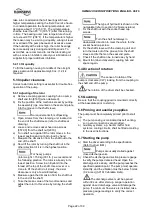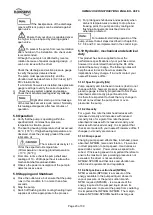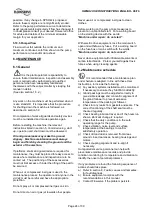
HWMA2 USER INSTRUCTIONS ENGLISH - 06/16
Page 9 of 39
1.8 Specific machine performance
For performance parameters see section 1.5,
Duty
conditions
. When the Contract requirement specifies
these to be incorporated into user instructions these
are included here. Where performance data has been
supplied separately to the purchaser these should be
obtained and retained with these user instructions if
required.
1.9 Noise level
Attention must be given to the exposure of personnel
to the noise, and local legislation will define when
guidance to personnel on noise limitation is required,
and when noise exposure reduction is mandatory.
This is typically 80 to 85 dBA.
The usual approach is to control the exposure time to
the noise or to enclose the machine to reduce
emitted sound. You may have already specified a
limiting noise level when the equipment was ordered,
however if no noise requirements were defined, then
attention is drawn to the following table to give an
indication of equipment noise level so that you can
take the appropriate action in your plant.
Pump noise level is dependent on a number of
operational factors, flow rate, pipework design and
acoustic characteristics of the building, and so the
values given are subject to a 3 dBA tolerance and
cannot be guaranteed.
Similarly the motor noise assumed in the “pump and
motor” noise is that typically expected from standard
and high efficiency motors when on load directly
driving the pump. Note that a motor driven by an
inverter may show an increased noise at some
speeds.
If a pump unit only has been purchased for fitting with
your own driver then the “pump only” noise levels in
the table should be combined with the level for the
driver obtained from the supplier. Consult Flowserve
or a noise specialist if assistance is required in
combining the values.
It is recommended that where exposure approaches
the prescribed limit, then site noise measurements
should be made.
The values are in sound pressure level L
pA
at 1 m
(3.3 ft) from the machine, for “free field conditions
over a reflecting plane”.
For estimating sound power level L
WA
(re 1 pW) then
add 14 dBA to the sound pressure value.


